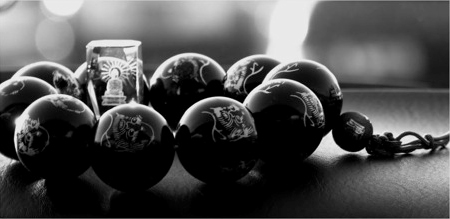
CASE #34: Keeping It Simple
Master Chu-hung said to Layman Liu Lo-yang of Su-Chou, “Because it is simple, those of high intelligence overlook it.”
BACKGROUND:
Master Chu-hung Chu-hung (1535-1615) was a master of the Ming Dynasty who combined Ch’an with Pure Land teaching. He is often credited with the revival of Buddhism in 16th century China.
Because it is simple Chu-hung is referring to the practice of nien-fo—reciting Namo-omito-fo, Amida Buddha’s name. A simple devotion, performed by laypeople and monastics alike, it could be used to express simple faith or to enter deep Samadhi, and often both at once. In Japan, where it became known as nembutsu, the nien-fo gradually drifted away from its origins as a meditative practice. In the Ch’an style advocated by Chu-hung, nien-fo was a way of realizing “one thought-moment of awareness” for people living in the everyday world.
Later in his discourse to Liu Lo-yang, Chu-hung says:
Right now, take this moment of mindfulness, and be mindful of buddha, remember buddha, recite the buddha-name. How close and cutting! What pure essential energy, so solid and real! If you see through where the mind arises, this is the Amitabha of our inherent nature. This is the meaning of Bodhidharma’s coming from the West [i.e., the meaning of Ch’an].
COMMENTARY:
Those who want to know why Bodhidharma came from the West just need to ask him directly. No need for a monastery as the scene for that meeting. Just get barefoot. For Buddha-recitation, the only acceptable backdrop is a world.
VERSE:
The world is simple,
Perfect, and without complaint.
There’s only one thing
That puzzles it—a temple!
What on Earth could that be for?
Thank you for subscribing to Tricycle! As a nonprofit, we depend on readers like you to keep Buddhist teachings and practices widely available.